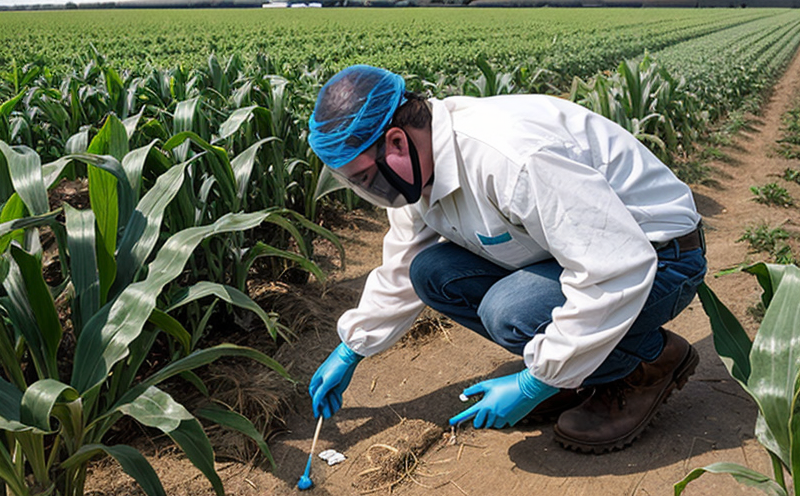Indoxacarb Residue Testing in Crops
Indoxacarb is a widely used pesticide that belongs to the benzoylphenylurea (BPU) family. It acts by blocking sodium channels, leading to paralysis and death of pests. Given its broad spectrum efficacy against insects, it has been extensively utilized in agriculture for controlling various pest species. However, the safe use of indoxacarb requires stringent monitoring to ensure that residues do not exceed allowable limits set forth by regulatory authorities.
Our laboratory offers comprehensive testing services specifically designed to detect and quantify indoxacarb residues in crops post-harvest. This service is crucial for ensuring compliance with international standards such as ISO, ASTM, EN, IEC, and others that govern pesticide residue levels. By providing accurate and reliable results, our team supports quality managers, compliance officers, R&D engineers, and procurement professionals in making informed decisions regarding the safety of agricultural products.
The process involves several critical steps starting with the collection of representative samples from different parts of the crop field or storage facilities. Samples are then transported under controlled conditions to our laboratory where they undergo initial screening using chromatographic techniques like Gas Chromatography (GC) or Liquid Chromatography (LC). Positive identifications prompt further analysis via more sensitive methods such as Mass Spectrometry (MS), enabling precise quantification of indoxacarb residues.
Our expertise lies not only in executing these tests accurately but also in interpreting the results within the context of current regulatory guidelines. We provide detailed reports that include information on detected levels, comparison against established limits, and recommendations for corrective actions if necessary. Our goal is to help stakeholders maintain high standards of product quality while ensuring compliance with applicable laws.
Moreover, our services extend beyond mere testing; we offer consultative support throughout the entire process. From understanding specific regulatory requirements to implementing effective sampling strategies and interpreting results correctly, our team stands ready to assist clients at every stage.
Industry Applications
| Application | Crop Type | Pest Controlled | Residue Limits (ppm) |
|---|---|---|---|
| Fruit Crops | Apples, Cherries, Peaches | Apple Maggot Fly, Cherry Fruit Fly | 0.5 ppm |
| Cereal Crops | Wheat, Barley | Hessian Fly | 1.0 ppm |
| Vegetable Crops | Lettuce, Spinach | Aphids, Thrips | 2.0 ppm |
International Acceptance and Recognition
The acceptance of indoxacarb residue testing results varies across countries based on their specific regulations and guidelines. However, internationally recognized standards like ISO, ASTM, EN, IEC play a significant role in harmonizing these practices. For instance, ISO 35067:2018 provides guidance on the analysis of residues from pesticides containing indoxacarb.
Our laboratory adheres strictly to these international norms ensuring that our findings are universally acceptable and credible. By aligning ourselves with such global standards, we not only enhance trust among clients but also facilitate smoother trade between nations by avoiding discrepancies in interpretation or enforcement of residue limits.
Competitive Advantage and Market Impact
The ability to accurately detect indoxacarb residues provides a significant competitive advantage for businesses involved in agricultural production, processing, and distribution. In today’s market where consumer awareness about food safety is increasing, companies that can demonstrate adherence to strict residue limits are more likely to gain customer loyalty and trust.
Furthermore, regulatory compliance helps protect brand reputation against potential recalls or legal actions due to non-compliance issues. Our service not only ensures that products meet regulatory requirements but also supports continuous improvement initiatives aimed at reducing environmental impact through responsible pesticide usage practices.





